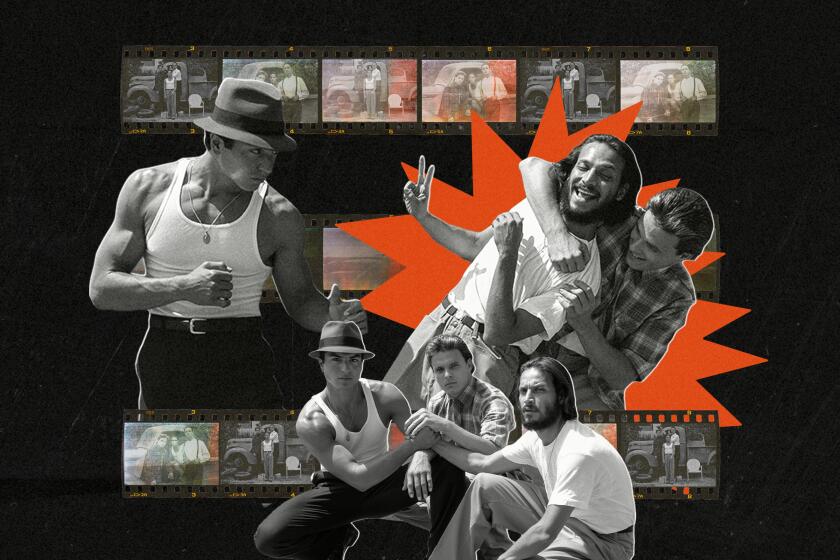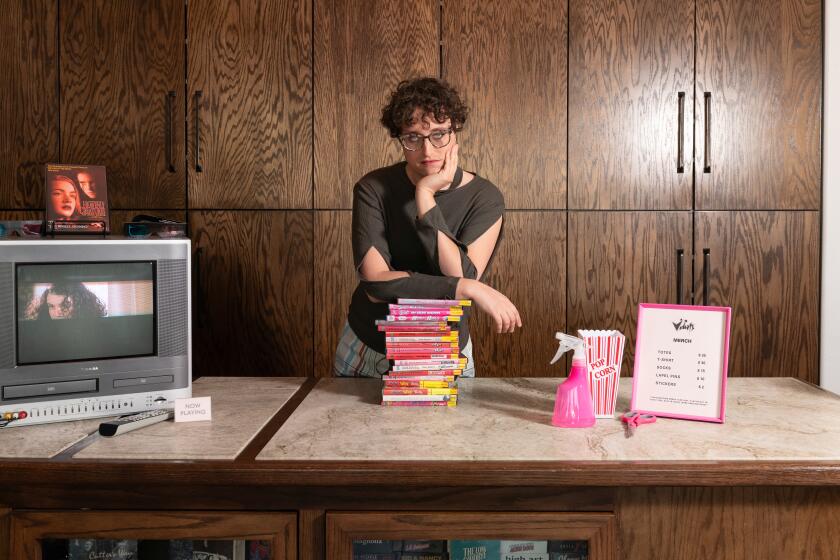NC-17 comes out from hiding
The NC-17 rating, long seen as the kiss of death for a movie, is suddenly coming to life.
Three NC-17 films have emerged since the first of the year. Bernardo Bertolucci’s “The Dreamers” came out in February, while “Young Adam,” starring Ewan McGregor and Tilda Swinton, premiered on Friday. And “High Tension,” a French horror film, is due out from Lions Gate Films in the fall. If the films do reasonably well, industry observers suggest, some of the studios’ psychological and economic resistance may start to break down.
Until this recent shift, the rating also had been a thorn in the side of the Motion Picture Assn. of America. Many moviegoers associated the designation (barring admittance to anyone younger than 17) with the former X rating, which -- in the absence of a copyright -- had been appropriated by the producers of pornography. In response, only 18 movies have been released with an NC-17 since 1990, when the MPAA created the NC-17 rating and did away with X. Not one film has been rated NC-17 in the last six years.
For its part, Lions Gate is going on the offensive. Rather than sending out “High Tension” unrated, as it did with “Irreversible,” (a tack the company can take because it’s not an MPAA signatory), or trimming to get an R, as it recently did with “The Cooler,” Lions Gate is throwing down the gauntlet.
“We feel it’s important to establish a legitimate adult rating,” said Tom Ortenberg, president of Lions Gate Releasing. “If the MPAA won’t do it, we’ll do it for them. By refusing to use its tremendous lobbying power to lean on newspapers and theaters [resistant to showing or promoting NC-17 material], the organization has marginalized the designation.
“ ‘High Tension’ has the potential to play beyond art-houses and become a commercial, mainstream movie,” Ortenberg adds. “NATO [The National Association of Theatre Owners] maintains that exhibitors are willing to play it -- and I’m taking them at their word.”
MPAA Chief Executive Jack Valenti acknowledges NC-17 has yet to fulfill its potential. “We’ve been urging exhibitors and distributors to use the rating for years,” he said, “trying to convince them that it doesn’t mean ‘pornographic’ or ‘obscene.’ In the end, it’s up to the distributors, who have to offer their movies up, and the exhibitors, who have to believe that there’s an audience for that material.”
In 1990, when “Henry & June” received the MPAA’s first NC-17 rating, director Philip Kaufman was optimistic. Finally, he thought, the U.S. was catching up with its European brethren, broadening the scope of its cinematic mix. That promise, however, soon fizzled. Only 100 or so theaters agreed to play his movie. Some newspapers turned down his ads. And retail chains such as Blockbuster and Wal-Mart refused to stock the movie when it went to video release.
“NC-17 became the Wicked Witch of the West, morphing into the old X,” said Kaufman, who had assumed the latter rating would be retained for racier fare. “Because only two NC-17 movies have made more than $10 million domestically, directors have had to contractually commit to delivering an R.”
John Fithian, president of the NATO, insists that the commercial impediment is a “myth” and cites a 2002 board meeting to illustrate his point. One hundred exhibitors were asked whether they’d show a NC-17 movie, if they thought it was good, he recalls. Almost everyone, from the biggest circuits in the world to the smallest independent theater owners, said yes.
“A very limited number, principally those in older shopping malls with lease restrictions, said no,” Fithian said. “But they’re on the downturn, in any case, and not the target audience. Most NC-17s play better in urban and upscale markets or artistic communities. We’ll know by year’s end whether these three films get the theater play they need.”
Steve Gilula, president of distribution at Fox Searchlight, suspects that the distributors of “Young Adam” and “High Tension” decided to give it a shot because the experience of “The Dreamers” was so favorable. He had no problem booking the film, he said, and only a Mormon-owned newspaper in Salt Lake City refused to take the ad. Playing in 116 theaters at the peak, it has made $2.5 million -- a “satisfactory release,” he notes, for a specialized film with a targeted audience. “Bertolucci controls the film so we had no say in cutting it,” he said. “In any case, work should be judged in the format the filmmaker intended. Still, we’re releasing one version in theaters and an edited version for home video. Television may be a stumbling block, but we expect the uncut version to play on cable.”
Fox Searchlight, however, did ask Kimberly Peirce to re-cut her critically-acclaimed “Boys Don’t Cry” when the parents who comprise the MPAA ratings board gave it an NC-17. Having to squeeze the material into an R was “devastating,” recalls the director, who lost her appeal by the slightest of margins.
“It’s great to have another option, so not everything has to be forced down to an R,” Peirce said. “In the past, NC-17s either weren’t released or were totally eviscerated. You have to take the blade and cut it out -- it’s so biblical. The MPAA indicated that one orgasm went on too long. Who’s ever hurt by female pleasure, I argued. They also had a problem with a character wiping his mouth during sex and with the anal rape that was so central to the story. Sex will get you an NC-17 much faster than violence -- as Mel Gibson’s [R-rated] movie proves.”
Michael Barker, co-president of Sony Pictures Classics, wonders why the sex in “Young Adam” was considered more offensive than the violence in “Kill Bill Vol. 2.” When Sony fought the NC-17 a month ago, the appeals board turned them down.
“Politics enters into the decision-making process,” he said. “Look at all the NC-17 films -- are any of them major studio movies with movie star names? As a result, the R category has become much too broad. Just as they created PG and PG-13, they could create two kinds of R to avoid setting an audience up for something more explicit.”
Economics, everyone agrees, will dictate whether the rating takes hold or remains on the back burner.
“In the next six years, there will certainly be more NC-17 movies than in the past six,” Gilula said. “The real test is whether studios with mainstream movies, in which they have significant investments, will decide to take the plunge.”
More to Read
Only good movies
Get the Indie Focus newsletter, Mark Olsen's weekly guide to the world of cinema.
You may occasionally receive promotional content from the Los Angeles Times.






